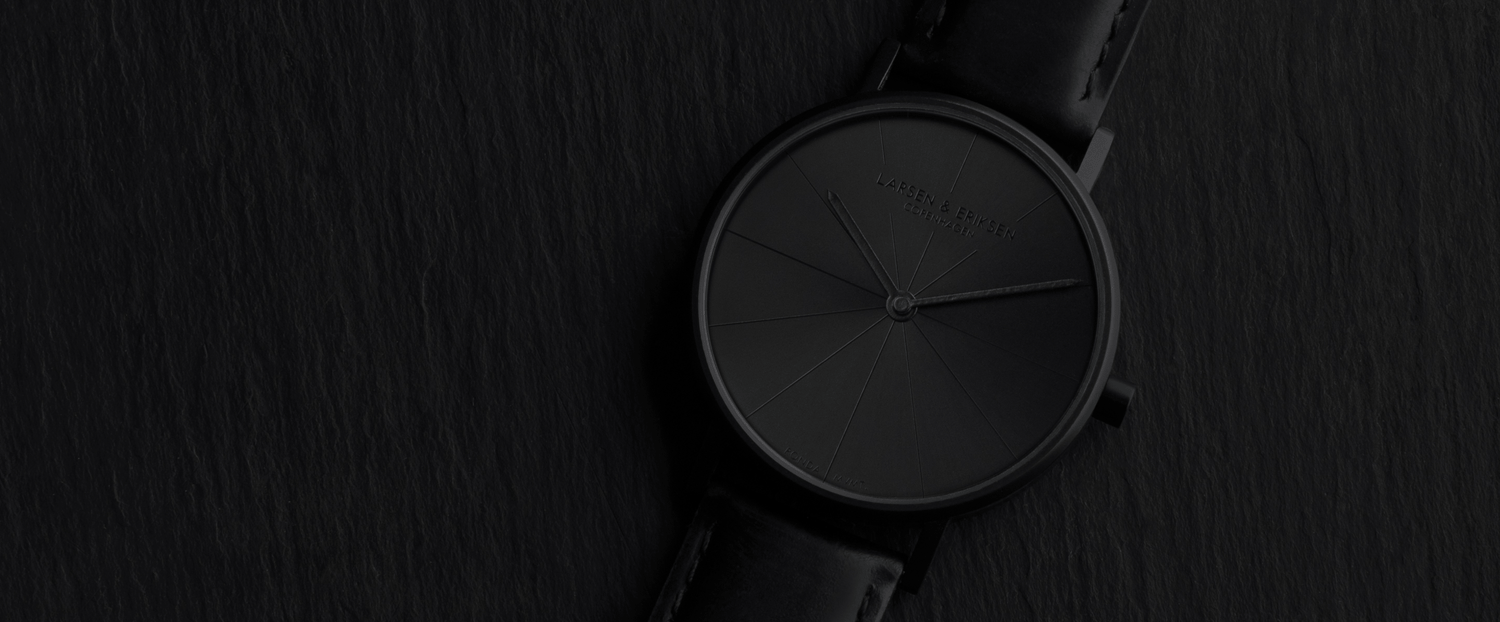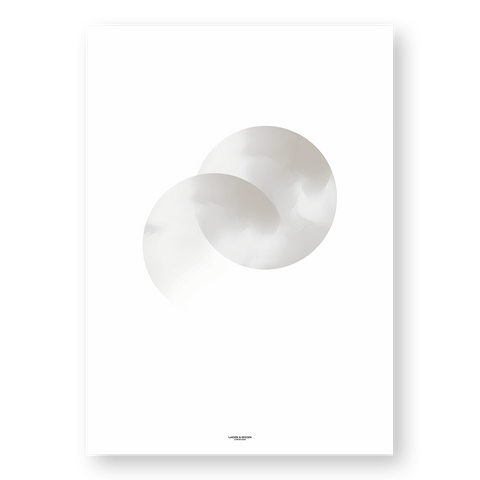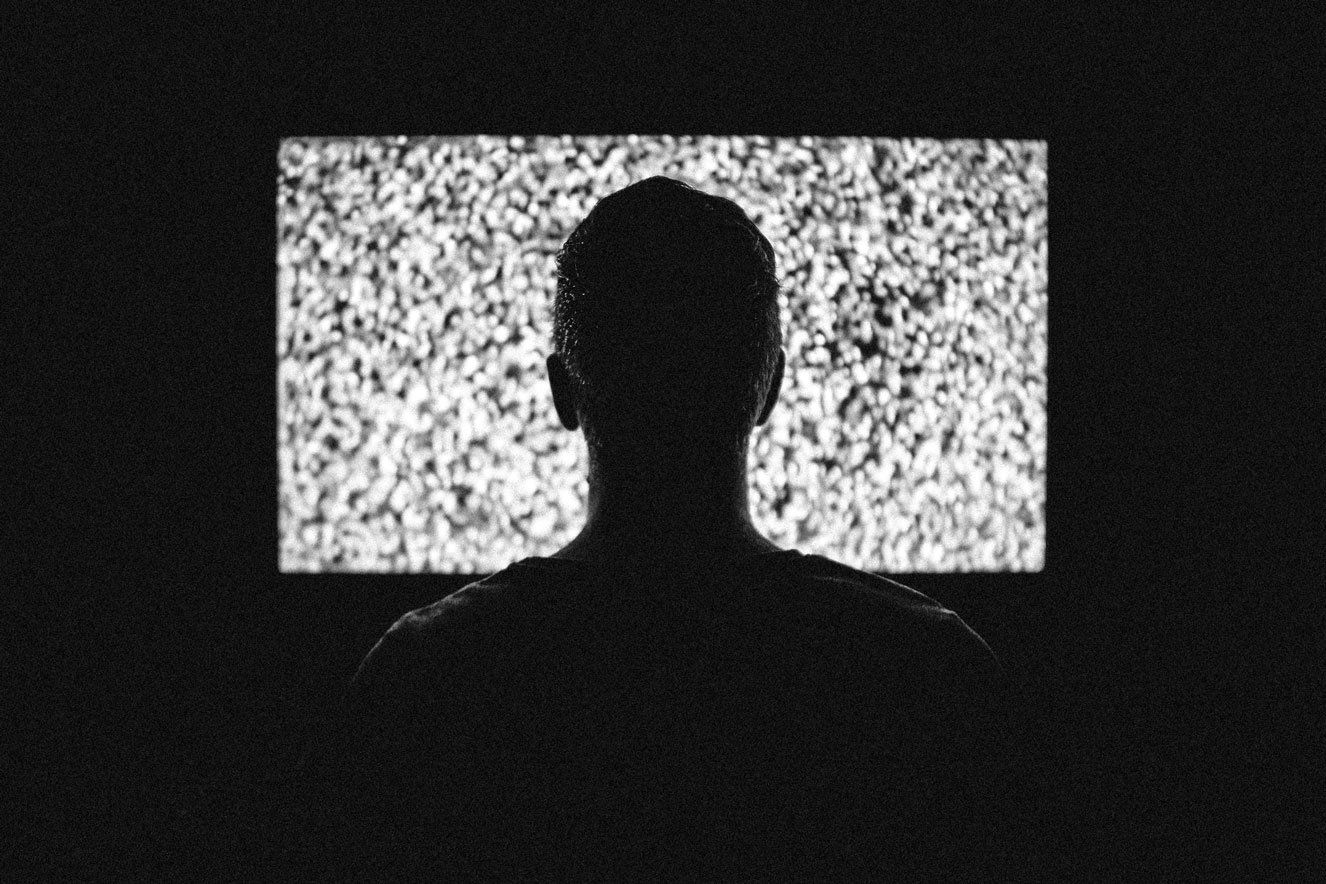LARSEN & ERIKSEN offers minimalist watches designed with a distinctly Scandinavian aesthetic. Scandinavian design and Swiss part movements are the core building blocks of our wristwatches. We strive to create minimalist watches for men and women that will not only provide excellent punctuality but will also serve as an aesthetic design element.
The concepts of minimalism and maximalism often arise in conversations about our design ethos. How does minimalism contrast with the extravagance of maximalism? What does minimalism truly represent, and how does it impact the realm of design? Is Scandinavian design synonymous with minimalism? What are the overlaps and divergences between the two?
We have done some research and we invite you to dig into the world of minimalist and also Scandinavian design - the definition, history and concept characteristics. If we break it down to a definition in linguistic terms, according to the Cambridge Online Dictionary:

DEFINITION OF 'MINIMALISM' BY CAMBRIDGE ONLINE DICTIONARY
Very often we hear the words “simplicity, setting the limits, avoiding all the extras, bare minimum” and so on when it comes to defining a minimalist approach. Let's delve deeper and clarify the minimalist concept, and its common misconceptions. We'll take you on a journey through the history of minimalism and its principles. Furthermore, we'll explore why Danish and, more broadly, Scandinavian design is often labeled as minimalist.
A BRIEF HISTORY OF MINIMALISM
In the mid-20th century, the aftermath of the war created a pent-up demand for goods. Prior to this, people lived with scarce supplies and limited options, even for daily necessities. As consumerism flourished, maximalism peaked. However, this trend wasn't only influenced by the global financial situation. Infrastructure development, which facilitated accessibility to new materials like steel, glass, and concrete, also played a key role.
Yet, it's widely agreed that the Minimalism movement took root in the 1960s and 1970s. Artists began favoring simple geometric shapes and lines, literal and objective meanings, shifting away from Abstract Expressionism and its excess layers. This minimalist trend permeated not only the realms of painting and sculpture but also architecture, product design, and eventually interior design and lifestyle.
The emphasis on essentials in art could trace back to 1915, when Russian painter Kasimir Malevich created a composition of a black square on a white background – a minimalist piece that epitomized simplicity. Over time, influential professionals increasingly preferred art that referred only to itself, demonstrating a straightforward approach and reducing anything that appeared excessive.

BLACK SQUARE BY KAZIMIR MALEVICH (1915)
Minimalism, a concept often associated with New York in the 1960s, is now globally recognized for its emphasis on simplicity, utility, and elegance. Referred to by several names including ABC art, Literalist art, Object art, or Cool art, it's the ethos of "LESS IS MORE" that sets the minimalist approach apart.
THE PHILOSOPHY OF MINIMALISM
Contrary to common misconceptions, minimalism isn't about deprivation or sacrifice. Instead, it focuses on embracing quality over quantity. Minimalists are thoughtful in their selection of items, ensuring everything owned serves a purpose and enhances their experience. Marie Kondo, the Japanese organizing consultant, exemplifies this by promoting decluttering and assigning significance to personal belongings.
Minimalism is also about intentionality, eliminating distractions, and making mindful choices. It promotes the value of experiences over material possessions, placing higher importance on meaningful items rather than those that merely occupy space. A minimalist lifestyle involves an internal focus, seeking personal harmony before external approval. It's a mindset, not a strict rulebook.
The minimalist approach may seem challenging in a world overflowing with buying options. However, adopting such a lifestyle can lead to greater self-appreciation, focus, and stress reduction. Importantly, minimalism isn't about choosing cheaper options but making smart, valuable purchases that fulfill a purpose.
In essence, minimalism promotes conscious decision-making about belongings, time, energy, and relationships. Minimalists are authentic, valuing simplicity and rejecting superficial mass consumerism. They aim to highlight the beauty, essence, and true purpose of things in their lives. As American spiritual teacher Vernon Howard stated, "you have succeeded in life when all you really want is only what you really need". This viewpoint aligns closely with the Scandinavian way of living, perhaps contributing to Danes frequently being ranked among the happiest nationalities.
Denmark, a modest nation of roughly 5.7 million residents, had its unique minimalist design philosophy shaped by post-war economic hardships. Mid-20th-century Danish designers like Arne Jakobsen, Kaare Klint, and Poul Henningsen, along with the government's innovative design initiatives, laid the foundation for Danish minimalist living. The drive towards architectural minimalism, with clean and sophisticated indoor and outdoor designs, was born out of necessity and a desire for comfort. Danish climate also plays a role, influencing the creation of enjoyable, cozy interiors — the epitome of the Danish "hygge" phenomenon.
Prominent talk-show host Oprah Winfrey encapsulated the essence of Denmark's environmental consciousness and efficient living after her 2009 visit, summarizing it as "Less space, less things, more life". Unlike the American penchant for consumerism, Danes prioritize lifestyle over possessions.
Scandinavian or Danish design and minimalist design share common threads of simplicity and functionality. However, differences emerge in their choice of materials and aesthetics. Minimalism often uses stainless steel, lacquered plastics, and chrome, while Scandinavian design incorporates organic materials, rugs, hemp, curved wood, and plants. Danish design also emphasizes the importance of light, form, playful elements, and monochromism. When compared to the austere minimalism of the 1960s USA, Scandinavian design has a softer touch featuring neat pastel tones, creamy grey, soft edges, and eco-materials.
The development of Scandinavian and Danish design was also shaped by the housing situation – limited spaces necessitated multifunctional, long-lasting, and efficient furniture. Authenticity, a cornerstone of minimalism, finds its home in Danish design, with a focus on self-acknowledgment, surrounding environment, and embracing life.
It's worth noting, not all minimalists strictly adhere to Scandinavian design, and not all Scandinavian design admirers are necessarily minimalists.
At LARSEN & ERIKSEN, we cherish and proudly uphold the rich tradition of Danish design. Our goal is to create minimalist watches that capture the beauty of simplicity — well-thought-out and precise designs that offer exactly what you need, no less, no more.
When browsing our website, you can see a wide range of classic and elegant minimalist watches: for men, for women, for everyone. As a matter of fact, at LARSEN & ERIKSEN we don’t feel the need to divide humans into gender. Consequently, we only design unisex watches. So, it doesn’t matter if you are looking for a men’s watches or a watch for women – we’ve got you covered. Visit our SHOP to experience our full range of beautiful Scandinavian design.













